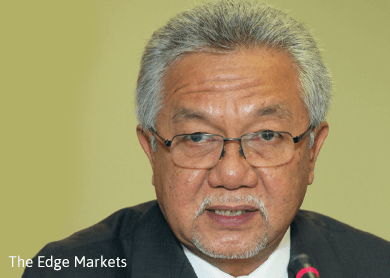
KUALA LUMPUR: Telekom Malaysia Bhd (TM) has become the second telecommunications company (telco) after Axiata Group Bhd to revise downwards its headline key performance indicators (KPIs) for 2015, indicating that the industry is bracing itself for a tougher operating environment ahead.
For the financial year ending Dec 31, 2015 (FY15), TM (fundamental: 1.1; valuation: 0.9) is now targeting growth in revenue and earnings before interest and tax (Ebit) of between 4% and 4.5%, compared with an earlier forecast of 6% and 8% respectively set in February 2013.
This growth will be largely supported by TM’s Internet business as demand for the service continues to grow, said its group chief executive officer Tan Sri Zamzamzairani Mohd Isa.
For the medium term or by FY17, TM wants to achieve a 5% to 5.5% growth in both revenue and Ebit.
Zamzamzairani said these targets do not take into consideration contribution from its 55.3% associate and WiMAX wireless provider, Packet One Networks (M) Sdn Bhd (P1), which TM acquired in March last year. The targets also exclude the implementation of both the high-speed broadband phase 2 (HSBB2) and sub-urban broadband projects which the government awarded to TM this week.
“What we are saying [with these KPIs] here is that we would like to see our Ebit growth match our revenue growth. We have to manage our cost to make sure our bottom line matches our top line,” said he told a news conference to announce the group’s FY14 results yesterday.
A comparison with the headline KPIs for FY14 also showed TM taking a more cautious stance on its forecasts for FY15. In FY14, TM aimed for a revenue growth of between 5% and 5.5%, which it achieved. It also aimed and reached its Ebit growth of 5% last year.
The more “realistic” targets, Zamzamzairani said, is a reflection of the “challenging” FY15 and a result of balancing efforts to increase earnings while expanding TM’s business.
“There are many factors which affect our KPIs. We are fixing the here and now business and, therefore, driving demand for UniFi, increasing average revenue per user by upselling and reducing churn. That’s the here and now.”
“At the same time, we also have to invest our business for future growth. As we do that, our capital expenditure (capex) will increase. The challenge is in finding the balance … and it is from that kind of analysis that we came up with our KPIs,” he said.
As for capex for FY15, TM has set aside 20% of its anticipated revenue for enhancing its core network, access and support systems.
TM is also cautious that competition among key market players would squeeze its profit margins this year but has said that it is well positioned to handle rivals.
“Competition has always been there. If anything, it will start heating up. If you look at the way the industry is growing, users are all moving into data. You see voice declining and it is a global phenomenon. Data and Internet are increasing. But we are well positioned in terms of the broadband business.”
“With P1 in the group, we have an additional element of mobility. This will enable us in the long run to provide converged services to our customers,” said Zamzamzairani.
Meanwhile, TM saw its net profit fall 17.8% to RM831.81 million in FY14 from RM1.01 billion in FY13 due to the absence of HSBB tax incentives.
This came on the back of a 5.7% increase in revenue to RM11.24 billion from RM10.63 billion in FY13. Earnings per share were lower at 22.89 sen compared with 28.29 sen.
For the fourth quarter ended Dec 31, 2014 (4QFY14), net profit also dropped 36.6% to RM218.27 million from RM344.24 million a year ago, due to tax reasons.
Revenue, however, was higher by 6% for the quarter under review at RM3.16 billion against RM2.98 billion in 4QFY13.
TM also declared a final dividend of 13.4 sen per share, bringing the total dividend payout for the year to 22.9 sen or RM846.8 million.
TM’s share price closed up 12 sen at RM7.10 yesterday, bringing a market capitalisation of RM25.96 billion.

The Edge Research’s fundamental score reflects a company’s profitability and balance sheet strength, calculated based on historical numbers. The valuation score determines if a stock is attractively valued or not, also based on historical numbers. A score of 3 suggests strong fundamentals and attractive valuations. Go to www.theedgemarkets.com for more details on a company’s financial dashboard.
This article first appeared in The Edge Financial Daily, on February 27, 2015.